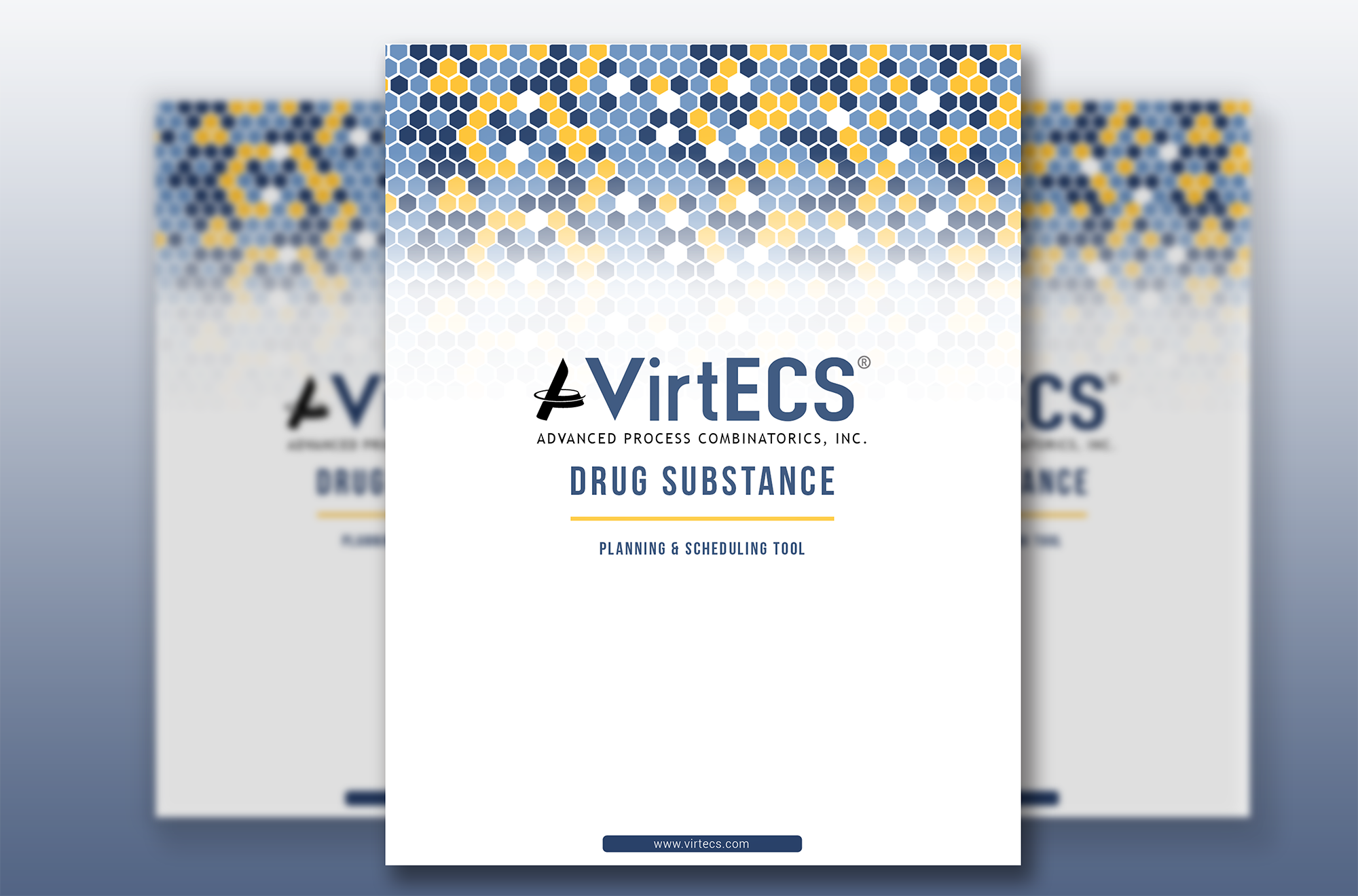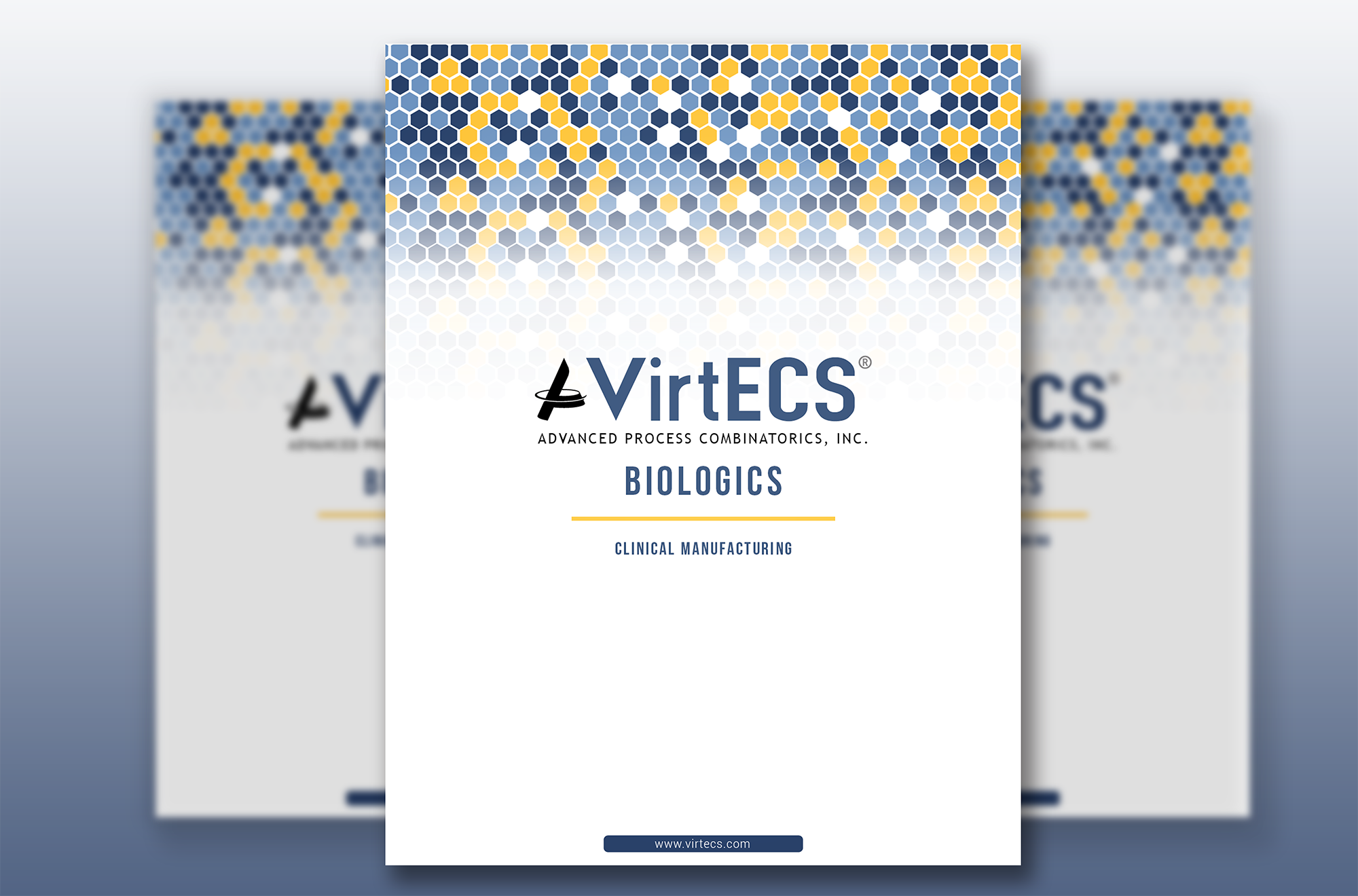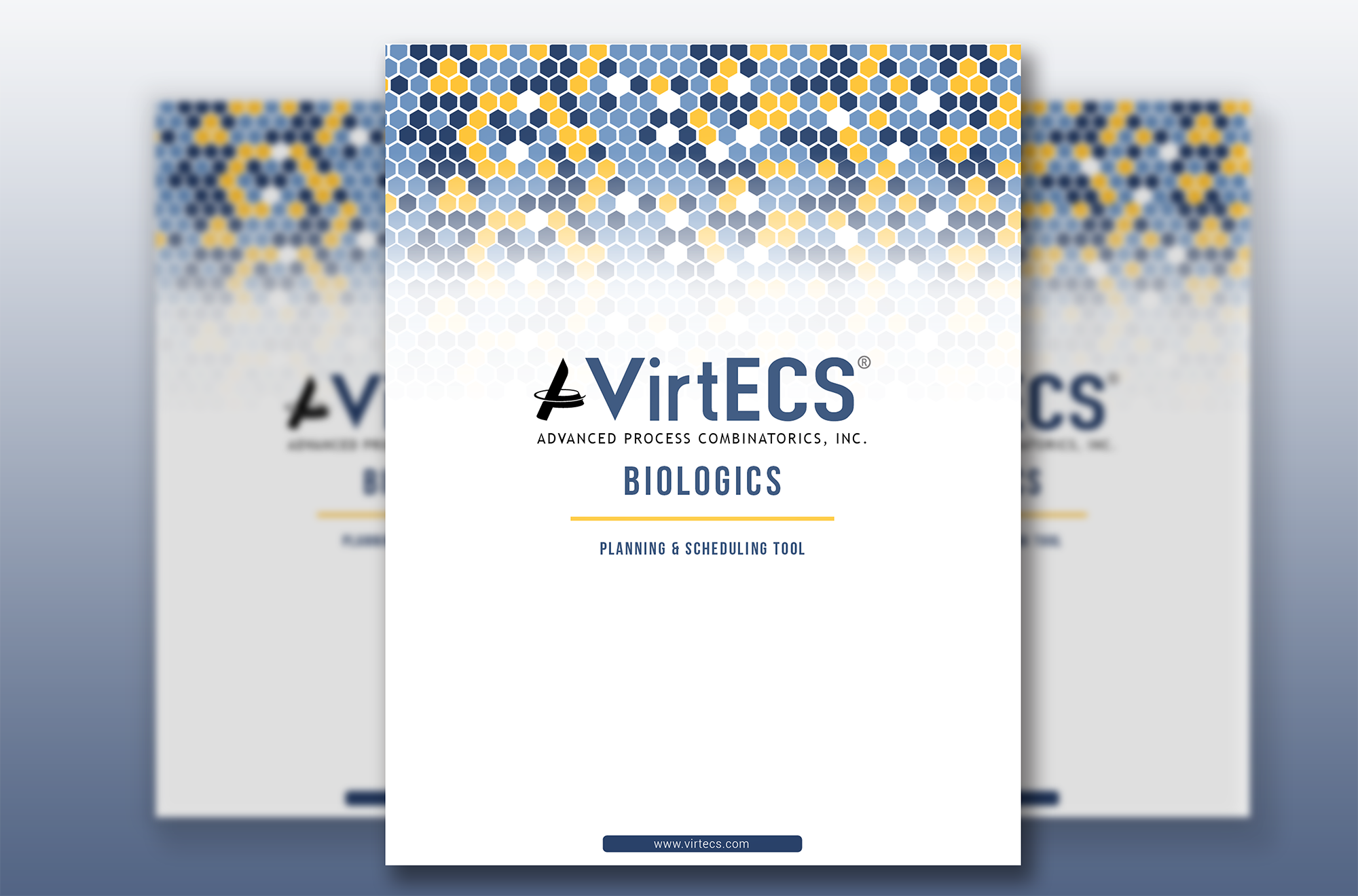
by Kelsey H | Apr 16, 2024 | Planning & Scheduling, Process Improvement
The past several years have been a time of accelerated innovation in the biopharmaceutical industry and new drugs are being developed at a rapid rate. According to Deloitte’s 13th Annual Pharmaceutical Innovation Report, the top 20 global pharmaceutical companies spent a combined $139 billion on research & development in 2022.
However, an observation coined “Eroom’s Law” shows a declining efficiency in bringing new drugs to market. The trend, named because it is the inverse of Moore’s Law in microelectronics, shows the cost of developing a new drug has doubled every 9 years. According to a 2016 report published in the Journal of Health Economics, it cost approximately $1 billion to bring 30 new drugs to market in 1950. Today, it costs nearly $3 billion to develop and successfully launch one new drug.
In the following series, we’ll break the life cycle of a new product into two distinct stages: clinical manufacturing and production scale manufacturing. We’ll analyze the critical components of each phase and how a process modeling tool can optimize your facility for success. To begin, let’s look at a new product ready to move from the lab into the manufacturing environment for clinical trials.
Transferring Tech to the Manufacturing Team
One of the most crucial stages in the development of a new drug is the shift from lab-scale to clinical manufacturing. Central to this transition is the tech transfer process. During this phase, all the product information and procedures created by the development team in the lab must be shared with the manufacturing team. This knowledge will be combined with equipment data and production practices to develop a process capable of meeting the supply needs of the upcoming clinical trials.
A significant amount of documentation and knowledge must be organized and transitioned for the transfer to be successful. A process modeling tool or digital twin can be a valuable tool for logging process data and supporting the collaboration between the development and manufacturing teams. A failure at this stage could create a loss of relevant technical knowledge, allowing previously solved problems to reemerge. These setbacks hinder the ability to begin manufacturing the necessary supply of product for clinical trials, delaying one of the most time-consuming parts of a drug’s journey to market.
Unfortunately, industry estimates show these delays are all too common – nearly 85% of all clinical trials experience delays. According to a 2022 report from Statista, the average clinical trial already lasts over 7 years and costs nearly $19 million to complete. Additional delays to the start of a clinical trial program will only compound the problem and jeopardize the journey to recoup the billions invested during development.
Selecting the Optimal Clinical Manufacturing Facility
Once the tech transfer is complete, the manufacturing team should begin a facility fit assessment to ensure the plant can complete the manufacturing process. This might entail evaluating multiple facilities to determine the optimal location. Leadership will look at the availability of all necessary equipment for production and material storage. The site’s current production schedule and overall capacity will also need to be taken into consideration.
Often these assessments can be supported by a digital twin. These virtual models can quickly identify the optimal facility already prepared for the clinical manufacturing needs. If potential gaps or risks present in all facility options, the digital twin can run experiments adding equipment or modifying the plant’s footprint to produce the optimal solution. Since this analysis can be performed in a matter of hours, facility fit evaluations can be completed early in the transition to clinical manufacturing. If these gaps are not discovered until later, they could lead to lengthy design and construction delays.
Mastering Process Design and Qualification
It has been said that clinical trials showcase a new drug’s efficacy, while the clinical manufacturing process determines its ability to succeed in the market. A great deal of scrutiny is placed on the manufacturing process as a new drug seeks approval, and regulators need to be convinced a facility can deliver a consistent product that meets the necessary quality standards. This entails minimizing variations in product batches that could compromise drug quality and risk process failure.
Digital twins become a useful tool during the process design phase because they allow developers an opportunity to test how different components of the manufacturing process will impact product variability and yield. Running these experiments in a digital environment could save an organization a significant amount of time and reduce the amount of costly process qualification runs needed from a test facility. This digital model will lead to a better understanding of the entire manufacturing process and allow for the implementation of stronger control strategies to keep every batch within specifications. A McKinsey analysis in conjunction with the World Economic Forum found that leading biopharma companies who utilized these digital tools saw up to a 50% reduction in deviations, and an 80% reduction in recurring deviations.
Designing for Flexibility
Manufacturing during the clinical stage of product development requires a great deal of flexibility. As data begins to emerge from phase I and phase II trials, formulation issues might be identified, and batches may begin to vary in both composition and size. If a facility is not prepared to adapt to these changes quickly, the entire clinical phase of development could suffer from significant delays and increased costs.
Without access to a digital twin, production decisions are often made that overcompensate for the new demands of the clinical trial and generate excessive waste. This excessive waste could reduce the budget available to expand the trials to new sites, slowing the progression toward drug approval. It could also place increased demands on the equipment within the facility and create cascade disruptions for other products in the plant’s portfolio.
Preparing For Scale-Up
While addressing the demands of clinical development, it is essential keep commercialization in mind. Much of the process design stage requires focus on data collection and regulatory compliance, leaving little room for long-term process optimization. Many facilities will focus on getting clinical studies underway quickly and delay consideration for scale-up needs until late into Phase II trials. They might arrive at a validated manufacturing process which meets the needs of the clinical stage, but it is often overly complex and lacks efficiency.
Faced with an urgent need to scale-up, facilities will often resort to simply stretching the small-scale clinical manufacturing operation to the new commercial scale demands. Many of the components in the process quickly become inefficient with this approach to expansion and increased quality-control issues risk the integrity of your new product. Making changes to the existing manufacturing process can be extremely costly, especially if a comparability bridging study is required to approve the new process.
Developers should utilize a digital twin during the process design phase to plan for long-term commercialization. Allocating time to this planning effort might slow down the early stages of process development, but it could avoid costly inefficiencies and time-consuming setbacks when demands of scale-up production arise later. A virtual model can quickly identify risks for product deviations or production bottlenecks when the existing processes are scaled up. Planners can troubleshoot solutions and identify any necessary capital investments early before they can lead to production delays. Despite the initial investment of time, this step ultimately speeds up a new product’s time to market.
Maximizing Revenue Potential
Digital twins are a critical tool for navigating new products through the clinical development phase towards registration. They also can have significant implications for company revenue. It has been estimated that leading pharma companies can lose up to 80% of revenue when a patent expires. EY reports over the next 5 years, an astounding $356 billion in worldwide sales are at risk from patent expiration. Utilizing powerful modeling tools like VirtECS to identify avoidable setbacks in the early stages of product and process development can add up to millions, or billions, of dollars in additional revenue when the clock is ticking.
If you’re interested in learning more about how VirtECS can improve your new product development process, download our short overview guide and check back for part two of this series next month.

by Kelsey H | Mar 4, 2024 | Planning & Scheduling, Process Improvement
In many real-world manufacturing environments, disruptions occur frequently, forcing unexpected adjustments to their production schedules. Some of these disruptions, such as supply chain delays or equipment breakdowns, are simply inevitable, even for the most proactive and prepared organizations.
Naturally, changes to the production schedule will affect the timeline of when the output can be completed. However, there are also other unexpected ripple effects of schedule changes that can impact the site’s broader operations. Understanding the full impact of scheduling adjustments can help your team better proactively prepare for these situations, as well as look for solutions that will minimize the ramifications of each change.
Inventory Management
One common consequence of production schedule changes is that raw material inventory will be higher or lower than previously projected. For example, if a start time is delayed by two hours, the raw product will need to be stored for two hours longer than planned. This can cause issues if your plant is tight on inventory space. You may unexpectedly lack space for incoming deliveries. On the other hand, if a different project is moved up in the schedule to replace the delayed run, sites following a just-in-time inventory philosophy may not have the necessary materials available yet.
Managing inventory during production schedule changes can be especially challenging for industries like biopharmaceutical manufacturing, which may have raw materials with strict storage requirements. If product is stored for too long (or not long enough) at suboptimal temperatures, it may result in wasted resources, which increases costs and causes further disruptions. To avoid these problems, it’s critical to consider inventory requirements when adjusting the production schedule.
Capacity Utilization
If constant schedule changes are leaving your plant continuously behind on production, it can become very difficult to accurately track your site’s data. When schedule decisions are made on the fly and operations are in flux on a day-to-day basis, your team may not be able to accurately measure the site’s true capacity limits.
Accurate data on site capacity utilization is crucial if your organization has goals to increase profitability or introduce new products to the plant. If the site can’t determine whether it has any capacity available, it hinders its ability to make smart decisions about new projects or scale up production on a product with surging demand. It can also be difficult to properly forecast and plan around future demand. As a result, the company is forced to miss out on maximizing output and landing potential sales they could have earned with a smarter scheduling solution.
Overtime
Depending on how long production is delayed during a schedule change, your site may need to utilize overtime labor in order to meet deadlines. While some use of overtime is unavoidable in manufacturing, it also leads to increased labor costs, especially if labor schedules aren’t optimized to distribute employees’ hours equitably.
In addition to facing higher costs, plants that regularly use overtime production tend to be less productive per hour. According to a manufacturing report from the International Labour Office, a 10% increase in overtime can result in a 2.4% decrease in output per hour. Making a concerted effort to keep production during regularly scheduled hours can help keep costs down and efficiency up throughout the plant. An employee engagement survey from Kronos Incorporated indicates that employee burnout from too much overtime work is responsible for up to 50% of businesses’ annual turnover.
Supply Chain
If your site can’t efficiently adapt to schedule disruptions and wants to avoid utilizing overtime, it may ultimately lead to backorders and out-of-stock products. When production runs behind, it often results in missed deadlines throughout the rest of the supply chain, such as scheduled product shipments with logistics partners. Failing to fulfill these demands is not only a frustration to vendors and customers; it’s also missed revenue for the company, both immediately and potentially long-term if consumers find suitable alternatives.
Maintenance
It is not uncommon for plants to utilize time allocated for preventative maintenance or special projects to offset the impact of production delays. While these compromises might help the facility meet the proposed deadline, they could come at a significant long-term cost and create future disruptions. Overlooking necessary maintenance increases the odds of equipment failure requiring a lengthy repair or unnecessary capital expenditures on a replacement. Delaying special process improvement projects limit the plant’s ability to realize its capacity potential. At minimum, these maintenance or improvement tasks will need to be squeezed into sub-optimal timeframes that will impact normal operation.
—
Without an advanced planning and scheduling tool, plants are left reacting to changing site conditions with last-minute, unoptimized schedule changes that can result in these troubling issues felt across the site. VirtECS is a unique planning and scheduling solution that solves many of these challenges for clients in a range of industries. VirtECS will not only suggest the best schedule based on your plant’s individual constraints, but it can also handle sudden schedule changes and account for subsequent adjustments that will need to be made throughout the production process.
As a finite scheduler at one of our biopharmaceutical clients put it, “VirtECS handles all of the ripple effects to the schedule when things change. It is a big time savings in a complicated process with lots of constraints.” If you’re interested in learning more about how VirtECS can improve your planning and scheduling processes, download our short overview guide to find out about the many benefits of implementing the tool at your plant.

by Kelsey H | Jan 16, 2024 | Planning & Scheduling
AspenTech and VirtECS are two of pharmaceutical manufacturers’ most well-known choices for process modeling, analysis, and planning & scheduling software providers. For plants looking to optimize their production schedules and improve their overall output, both tools can offer compelling benefits. However, despite their similarities, each tool is better suited to match different manufacturing needs and priorities within the biopharma industry. Keep reading to find out the biggest differences and advantages of each tool as you decide if AspenTech or VirtECS is right for your organization.
Planning & Scheduling
In terms of manufacturing planning and scheduling, AspenTech and VirtECS offer similar core capabilities. Both tools can build a workable plant schedule based on unique input, and they both offer a means of publishing that schedule across the site through their Aspen Schedule Explorer and VirtECS Symphony products. AspenTech and VirtECS are also both well-equipped to support sales and operations planning (S&OP) initiatives by accounting for costs and market conditions in their planning and scheduling recommendations. They offer similar integration abilities, as well, as they both link to MES systems, allowing sites to receive real-time updates on scheduling execution.
However, one major advantage VirtECS offers is a foundation in a unique, proprietary math programming technology developed by experienced, expert engineers. AspenTech still uses traditional methods of solving scheduling-based math problems, which limits the scope of its solutions. VirtECS technology provides a bird’s eye view of production with an extensive degree of detail. It can account for extremely complex plant constraints, which allows VirtECS to solve advanced scheduling problems at real-world scale. With such a detailed, clear view of the plant’s specifications, VirtECS can also analyze a tremendous number of possible scheduling arrangements and quickly pick the best available option, which enables sites to maximize their throughput.
VirtECS also offers the unique benefit of continually re-optimizing its schedule based on current conditions. With VirtECS’ human-in-the-loop capabilities, the software can account for real-time disruptions and circumstances. Then, within minutes, VirtECS will automatically adjust the rest of the schedule to account for the impact of the changes while maintaining optimal throughput. Similarly, VirtECS users can also choose to override the automated schedule based on their human knowledge of the plant, and the tool’s algorithm will adapt accordingly in the future. AspenTech’s traditional technology cannot offer this advanced capability.
Process Modeling & Analysis
VirtECS’ unique technology also provides advantages in process modeling at manufacturing plants. The tool’s ability to handle complex constraints and details eliminates the need to scale down its plant model to complete its analysis in a reasonable amount of time. Because AspenTech is not able to manage input with the same level of detail, it’s forced to make compromises when developing its plant model to avoid lengthy delays. More traditional approaches to solving schedules, including the methods used to build AspenTech, are better suited to more simple manufacturing processes or situations that don’t require a fast solution.
Even with the heightened detail added to its models, VirtECS is able to complete its analysis and identify optimized scheduling solutions faster than its competitors, including AspenTech. During a BioProcess International Conference keynote speech, Jon Forstrom, Director of Manufacturing Science and Technology at Sanofi, said the faster processing times were a major factor in selecting VirtECS as their process modeling solution. Forstrom said, “We had a challenging test case that we gave modeling vendors, and well-known software providers would either say ‘Sorry, we can’t do what you’re asking,’ or ‘Yes, we can run a one-year manufacturing scenario, but it’s probably going to take a day to complete.’ That’s not very smart or agile. VirtECS can do the same model in thirty seconds now.”
Process Templates
Both AspenTech and VirtECS do offer process templates within their plant models. However, AspenTech’s templates are designed to simply help users input their data more efficiently. VirtECS process templates go a step beyond faster importing. These templates serve to support unique site constraints and additional solver engineering. VirtECS customers regularly cite the tool’s ability to manage their highly specific, complicated site constraints as one of its greatest strengths. In fact, past clients have noted that AspenTech and other similar modeling programs were unable to account for their complex constraints with the prevision they needed, leading them to seek a more customizable solution in VirtECS.
If your site is experiencing similar issues finding a modeling, planning, and scheduling tool that can manage complicated constraints while still efficiently providing solutions, you may find more success using a proprietary software like VirtECS. For more information about VirtECS’ unique approach and benefits specifically within its process modeling and analysis product, download a short guide here.

by Kelsey H | Dec 12, 2023 | Planning & Scheduling
To keep up with the rapid rate of innovation in the global manufacturing industry, a growing number of companies are turning to smart manufacturing with advanced planning and scheduling programs. According to Gartner, nearly 80% of manufacturers are currently investing in their plants’ digital transformations to keep up with changes in the market.
The digital ecosystems these businesses are investing in rely on a complex network of technologies. To implement, maintain, and integrate new planning & scheduling programs with existing tools, your IT department will be one of your most important resources. In many of the organizations we work with, the IT team is instrumental in both selecting the best tools to implement and keeping all technology systems up and running.
As your business considers which digital investments you’ll make in the coming year and beyond, there are several areas where you’ll want to consult IT for their input. Keep reading to discover IT’s role in manufacturing planning and scheduling, as well as the features they’ll appreciate the most when you select a new tool.
Integrating New Tools with Existing Programs
When evaluating and selecting a planning and scheduling software solution (or any manufacturing software solution, for that matter), your IT team will likely advise you to select programs that interact and integrate with each other. There are several reasons your site will find this beneficial. Using integrated tools not only makes it easier for IT to manage your technology systems, but it also makes your entire site more efficient. Using technologies that connect and communicate removes data siloes within the site, making critical information more accessible across departments and providing possibilities to identify plant improvements.
VirtECS, our advanced planning and scheduling solution, offers several features that make it easier for your IT team to integrate the tool into your existing system. Our customers have successfully and seamlessly completed several third-party integrations with OSI Pi, SAP, and other manufacturing technologies. With our decades of experience implementing VirtECS into manufacturing environments, our experts can also provide proven recommendations on how to best build an intuitive system architecture. Plus, if your IT team is busy with other site projects, our team can implement VirtECS into your plant ourselves, or simply offer additional support as needed.
Finding Scalable Solutions
When working with our customers, we’ve often observed that when one manufacturing site finds an effective tool, the business will want to quickly implement the same program at their other plants to reap the most value. For that reason, your IT department may be looking for software that can be easily scaled across the company. Utilizing scalable tools simplifies many aspects of your company’s technology framework by reducing costs associated with the tool, streamlining training and communication, and making it easier for the business to grow.
If your company is looking for scalable software, highly customized solutions can be too time-consuming to be practical for the IT team. A tool like VirtECS can provide all the planning and scheduling features you’ll need under one platform, so IT won’t need to build a custom system themselves or adapt other technology to fit your industry. In addition, our VirtECS experts can provide training to your planning and scheduling team, so IT leaders won’t need to use their valuable time becoming experts on the tool and training staff themselves.
Ensuring Systems Are Secure
One of IT’s biggest priorities and concerns is protecting your business’ confidential information. For any software you add to your manufacturing plant, it will be crucial to ensure that it does not pose cybersecurity risks. If the planning and scheduling tool you select opens your organization up to cyberattacks, IT will need to add security barriers to the software and initiate backups to prevent losing valuable data. The manufacturing industry experiences more cyberattacks than any other industry, and such invasions can cause costly delays and revenue loss.
To ease IT’s security concerns, VirtECS offers a self-hosted software option to limit the risks often associated with a cloud-based solution. Our self-hosted option allows your organization to retain complete control over the data contained in VirtECS, which minimizes hackers’ ability to access your information. This feature has helped VirtECS become a trusted tool for customers even in industries with strict data privacy regulations, such as healthcare and biotechnology.
Adding New Capabilities
As market conditions and industry trends continue to fluctuate, your manufacturing plant may find that your planning and scheduling software needs updating to reflect these changes. In these situations, your IT department will be incredibly helpful in installing software updates, revising the software’s framework to mirror changes in your plant, or coordinating with your software provider to request additional capabilities.
After working with manufacturing businesses for decades, our team is used to making adjustments to VirtECS as the industry advances and technologies change. Some experts refer to this process as “change management,” which simply means creating a manufacturing environment that can effectively respond to change while maintaining optimized operations. One of VirtECS’ best features is that our planning and scheduling system is based on a model of each unique plant, which can be quickly and continually changed to reflect new scenarios or test possible improvements. Our experts can train your team on how to use the VirtECS plant model to facilitate change management and provide expertise on best practices keep processes optimized while responding to change. If you’re interested in learning more about how VirtECS can help your IT team to improve planning and scheduling processes without disrupting your site’s current software systems, fill out a short form and one of our experts will reach out to learn more about your site’s unique needs.
by admin | Nov 20, 2023 | Planning & Scheduling, Process Improvement
This presentation will discuss a unique and practical learning framework – VirtECS (Virtually Exhaustive Combinatorial System) – to rapidly (1) enable a high-fidelity model of bioprocessing and (2) search the many possible process schedules to find a high-performance way to operate. VirtECS improves capital efficiency, drives throughput increases, and promotes cost reduction. VirtECS can be used to establish manufacturing social media that promotes continuous improvement, complexity mitigation, and teamwork.

by Kelsey H | Oct 17, 2023 | Planning & Scheduling
Pharmaceutical companies have seen significant growth in revenue since 2020. For these future-thinking companies, it is important to reinvest funds into their facilities to add resources and new capabilities to fuel continued innovation. Currently, Goldman Sachs estimates that the global pharmaceutical industry could see up to $700 billion in acquisitions and investments in the coming years.
In recent months, many of the world’s largest pharmaceutical manufacturers announced investments into expanding production or improving their facilities. Denmark-based Novo Nordisk has begun investing $2.3 billion to expand capacity at their plant in Hillerød. Novartis, based out of Switzerland, plans to invest $300 million into operations at several of their European sites to support their push into biologics medicines. In the US, Eli Lilly will spend $450 million to increase production of diabetes medicine in North Carolina, while also adding $1.6 billion to their site in Indiana.
When spending millions or even billions of dollars, even small optimizations can lead to significant financial gains for pharmaceutical manufacturers. Keep reading to discover how digital twin technology can optimize plant expansion investments to add flexibility and increase efficiency.
Optimizing Investment for Flexible Future Circumstances
For most companies, the overarching goal of major capital investments is to increase production to meet consumer demand or add the ability to produce new products. These projects may take years to come to fruition, and as such, they are often subject to change based on market conditions.
To account for variable conditions, the shrewdest investment strategies allow for flexibility within the facility. When investing in a site expansion, the added capacity should be designed to adapt to new processes, technologies, or product portfolios that become a priority in the future. This method allows organizations to pivot quickly to follow changes to consumer demand or adjust to take on production for new medicines without additional added capacity.
With a powerful virtual model, also known as a digital twin, plants can test and evaluate different potential layouts to identify which will provide them with the most flexibility. Because the digital twin is an exact copy of the site’s unique parameters, the planning and scheduling team can digitally add pieces of equipment, production lines, and processes to simulate a real manufacturing run. The tool can then run many simulations at once to, allowing the site to see how flexible the proposed layout may be and ultimately identify the most efficient investment solution.
Using Plant Expansion to Increase Efficiency
In addition to adding flexibility and overall capacity, investments into manufacturing facilities also present an opportunity for companies to increase production efficiency and generally get the most value possible from each investment dollar. As noted in Eli Lilly’s press release announcing their plant expansion, these investments are not only about improving business operations; they are also essential to helping more patients access the medicines they need. Often, achieving that goal comes down to optimizing resource allocation to achieve the best run rate with the added capacity sites.
After more than 30 years in the industry, we’ve found that using a digital twin like VirtECS is the most reliable and effective way to optimize resources. With the data VirtECS collects, the software can quickly analyze past and future manufacturing runs to identify every possible opportunity to maximize output with the given number of equipment and raw material. Sites can test potential changes to each step of the production process to find where additional investment may have the biggest impact, and where the effects could be limited. To learn more about VirtECS’ digital twin capabilities, download our short guide here.













